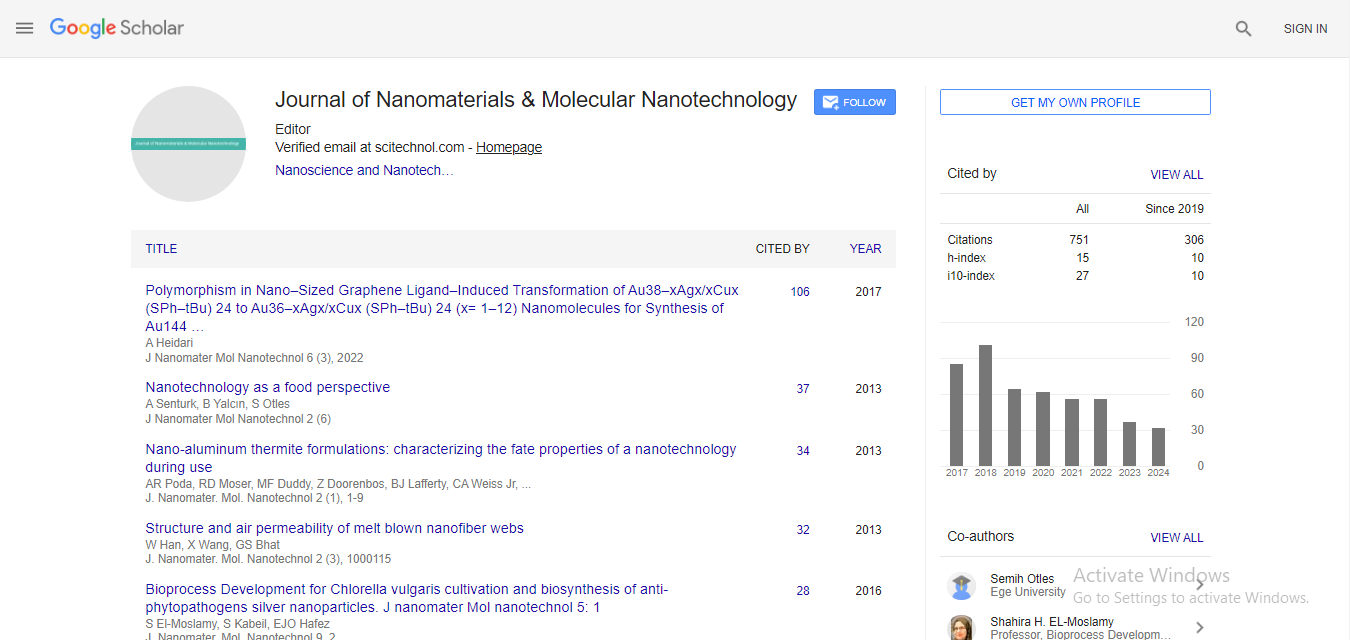Fabrication and properties of thermoresponsive materials: Experimental and computational studies
Mahdi Moshref-Javadi
Monash University, Australia
: J Nanomater Mol Nanotechnol
Abstract
Stimuli-responsive materials can undergo relatively large and abrupt, physical or chemical changes in response to external changes in environmental conditions. This characteristic originates from their responsive behavior against slight stimuli in the surrounding environment. These smart materials can recognize a stimulus as a signal, judge the magnitude of that, then change their configuration in direct response. The stimuli can be classified into chemical (pH change, salt concentration), physical (temperature, pressure, electric/magnetic field, and mechanical (stress). Thermo-responsive materials are able to demonstrate change in properties/function as a result of temperature change. They have been the focus of many researches as well as industrial applications, mainly because of the ease in activation during application. In this talk, research results on two groups of thermoresponsive materials are discussed. In the first part, our experimental findings on High Temperature Shape Memory Alloys (HTSMAs) will be presented. This part will cover significant results on these materials with respect to their fabrication, mechanical treatment, and aging heat treatment. In particular, aging treatment is shown to be an efficient method for enhancing transition temperatures and shape memory properties. In the second part, molecular simulations of thermo-responsive polymergraphene hybrid systems will be discussed. Using largescale simulations, formation and stimuli-responsive properties of these systems are explained from an atomistic point of view. More specifically, the rationale behind shift in transition temperature, which occurs in hybrid systems, is elucidated in terms of interactions and solvation behavior.
Biography
E-mail: mahdi.moshrefj@monash.edu
 Spanish
Spanish  Chinese
Chinese  Russian
Russian  German
German  French
French  Japanese
Japanese  Portuguese
Portuguese  Hindi
Hindi 



